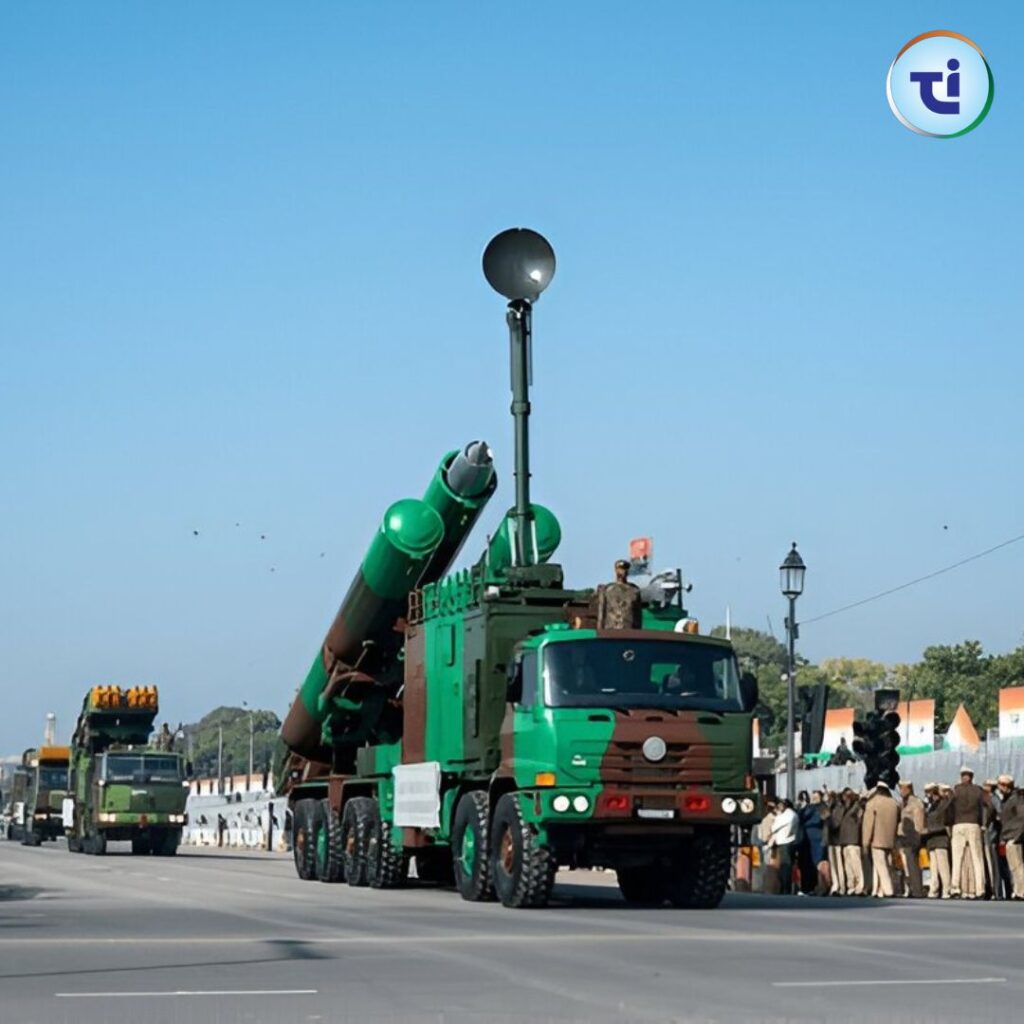India’s defense capabilities have witnessed remarkable advancements over the past two decades, and one name that consistently stands out is the BrahMos missile. Known for its speed, precision, and versatility, the BrahMos is a supersonic cruise missile jointly developed by India and Russia. Its name is derived from two famous rivers—Brahmaputra in India and Moskva in Russia—symbolizing the collaboration between the two nations.
Since its induction, BrahMos has established itself as a game-changer in modern warfare. It holds the title of the world’s fastest supersonic cruise missile in operation, capable of striking its target with unmatched accuracy. Let’s take a closer look at the origin, features, variants, and strategic significance of this missile.
History and Development
The BrahMos missile project began as a joint venture between Defence Research and Development Organisation (DRDO) of India and NPOM (NPO Mashinostroyeniya) of Russia. The formal agreement was signed in February 1998, leading to the creation of the BrahMos Aerospace Private Limited.
The primary goal was to develop a cruise missile that could be deployed across multiple platforms—land, air, sea, and even undersea—offering flexibility in modern combat scenarios. The first successful test flight of BrahMos took place in 2001, and since then, the missile has undergone continuous upgrades to enhance its range, speed, and precision.

Key Features of BrahMos Missile
The BrahMos missile stands out due to its combination of speed, accuracy, and versatility. Its main features include:
- Supersonic Speed
BrahMos can travel at a speed of Mach 2.8 to Mach 3 (nearly three times the speed of sound), reducing the enemy’s reaction time and making interception extremely difficult. - Versatility in Deployment
It can be launched from land-based launchers, ships, submarines, and aircraft, giving the armed forces a tactical advantage. - Precision Strike Capability
Equipped with advanced guidance systems, BrahMos can strike targets within a few meters of accuracy. - Range and Payload
Initially, BrahMos had a range of 290 km, keeping it compliant with the Missile Technology Control Regime (MTCR). After India’s entry into MTCR in 2016, its range has been extended to over 400 km, and newer versions are being developed for 800 km range. It can carry a 200–300 kg conventional warhead. - Stealth and Low Radar Signature
The missile’s design incorporates stealth technology to reduce radar detection, making it even more lethal.
Variants of BrahMos Missile
Over the years, multiple variants of the BrahMos have been developed to suit different operational needs:
1. BrahMos Block I
- The first operational version, designed for land attack roles.
- High accuracy against fixed targets.
2. BrahMos Block II
- Enhanced precision strike capabilities against moving targets, such as mobile radar stations or command centers.
3. BrahMos Block III
- Specializes in mountainous and difficult terrains.
- Capable of high maneuverability and steep dives to hit hidden targets.
4. BrahMos-NG (Next Generation)
- A smaller, lighter, and faster version currently in development.
- Can be deployed on more aircraft types and have improved stealth features.
5. BrahMos-A (Air-Launched)
- Designed for launch from fighter jets like the Su-30MKI.
- Successfully test-fired in 2017, making India the only country with a supersonic cruise missile capable of air launch.
6. Naval and Submarine-Launched BrahMos
- The Indian Navy has equipped several warships with BrahMos launchers.
- Submarine-launched variants provide stealth strike capability from underwater.
Strategic Importance of BrahMos Missile
BrahMos is not just a weapon; it is a strategic deterrent. Its speed, range, and versatility make it a critical asset in maintaining India’s defense posture.
- Quick Reaction Capability
In modern warfare, the ability to strike fast and hard is crucial. BrahMos’ supersonic speed allows the Indian Armed Forces to neutralize threats before the enemy can react. - Force Multiplier
By integrating BrahMos into the Army, Navy, and Air Force, India has created a unified strike capability that enhances joint operations. - Regional Power Projection
BrahMos strengthens India’s position in the Indo-Pacific region, sending a clear message to adversaries. - Export Potential
With several countries showing interest—such as the Philippines, Vietnam, and UAE—BrahMos could boost India’s defense exports significantly. In fact, the Philippines became the first foreign buyer of BrahMos in 2022.
Upgrades and Future Plans
BrahMos is continuously evolving to meet the demands of future battlefields. Some upcoming developments include:
- BrahMos-ER (Extended Range): Capable of striking targets over 800 km away.
- BrahMos-Hypersonic: Research is ongoing to develop a hypersonic version (Mach 5+), which would make it virtually impossible to intercept.
- Improved Guidance Systems: Enhancing target tracking using advanced satellite navigation.
- Lighter Air-Launched Versions: Allowing deployment from more aircraft types, increasing operational flexibility.
BrahMos in Combat Readiness
While BrahMos has not been used in an actual war scenario yet, it has undergone numerous successful tests under varying conditions. The Indian Army has deployed several regiments equipped with mobile launchers, the Navy operates ship-based and underwater versions, and the Air Force has integrated air-launched variants.
Its operational readiness means that BrahMos can be deployed quickly in any conflict, making it a credible deterrent to potential adversaries.
Global Impact
BrahMos is often compared to other cruise missiles, but its unique combination of speed, precision, and adaptability makes it stand out. It gives India a technological edge while fostering stronger defense ties with partner nations.
The missile’s export success with the Philippines also opens new opportunities for defense cooperation in Southeast Asia, which is strategically significant given regional tensions in the South China Sea.
Conclusion
The BrahMos missile is more than a product of technological excellence—it is a symbol of India’s growing defense capabilities and international collaborations. Its unmatched speed, pinpoint accuracy, and multi-platform versatility make it one of the most formidable weapons in the world today.
As technology advances, BrahMos is set to evolve into even faster, more lethal variants, solidifying its place as a cornerstone of India’s strategic defense. In a world where speed and precision define military success, BrahMos remains India’s ultimate strike weapon—a true “shock and awe” system that ensures peace through strength.




